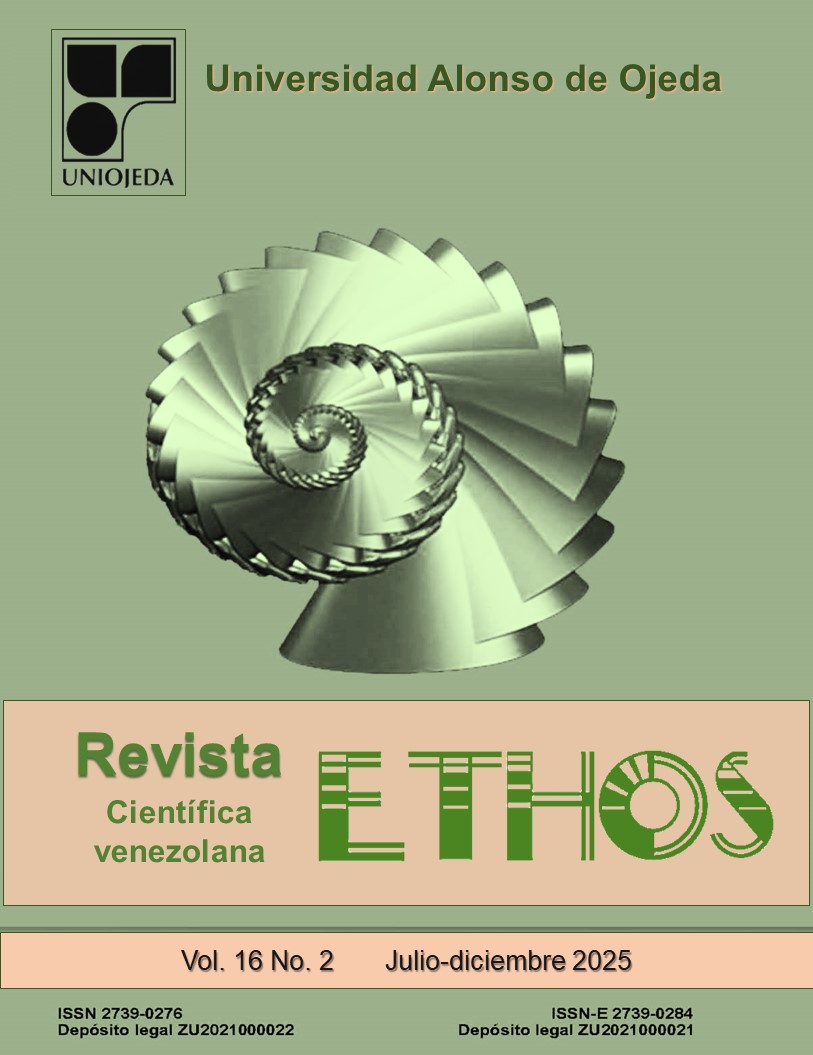Artificial intelligence and its application in the learning of chemistry in higher education
DOI:
https://doi.org/10.5281/zenodo.16894834Keywords:
chemistry teaching, artificial intelligence, technology, higher educationAbstract
The purpose of this research is to present the fundamental aspects of Artificial Intelligence (AI) and its implementation in the learning of Chemistry in Higher Education. For this purpose, documentary research on the topic to be developed was carried out (Badaró et al., 2013; Vásquez et al., 2018; Baeza, 2021; Ayuso, 2022). The importance of chemistry lies in the fact that it is the science that studies the composition, structure, and properties of matter, as well as the changes it undergoes during chemical reactions. Historically, modern chemistry is the revolution of alchemy after the chemical revolution (Baeza, 2021), having the first experiences of man as a chemist with the use of fire in the transformation of matter. On the other hand, artificial intelligence in the chemical industry is making waves thanks to the ability it gives companies to optimize their production processes, analyze the process, and collect high-precision data, in addition to significantly reducing production costs. Therefore, as the chemical sector is at the forefront of innovation, it is important to implement this technological resource in chemical teaching and thus take advantage of the new technologies and solutions available to it.
Downloads
References
Barrio, J. (2018). Aspectos del inacabamiento humano. Observaciones desde la antropología de la educación. Recuperado de: https://reunir.unir.net/bitstream/handle/123456789/7192/200-barrio.pdf?sequence=1&isAllowed=y
Caride, J. (2016). La pedagogía social en el diálogo de las universidades con la educación popular y la educación social. Revista Interamericana de Educación de Adultos, 38 (1), 85-106. Recuperado de: http://www.crefal.edu.mx/rieda/images/rieda-2016-1/contrapunto2.pdf
Corvalán, J. (2017). Inteligencia Artificial y derechos humanos (Parte I). Diario DPI Cuántico, Diario Constitucional y Derechos Humanos, Ciudad Autónoma de Buenos Aires.
Corvalán, J. (2018). Estados eficientes. La productividad del sector público bajo la lupa. Integración & comercio, 44, 256-264. Recuperado de: https://dialnet.unirioja.es/servlet/articulo?codigo=6551948
Cano, E., Rey, J., Graván, P. y López-Meneses, E. (2015). Diseño y desarrollo del modelo pedagógico de la plataforma educativa "Quantum University Project". Campus virtuales, 2(1), 54-63. Recuperado de: http://uajournals.com/ojs/index.php/campusvirtuales/article/view/28
Diéguez, A. (2017). Transhumanismo. La integración del hombre a la máquina. Lima: Herder Editorial.
Dodson, T., Mattei, N. y Goldsmith, J. (2011). A natural language argumentation interface for explanation generation in Markov decision processes. In International Conference on Algorithmic. Decision Theory, pp. 42-55. https://doi.org/10.1007/978-3-642-24873-3_4
Eaton, E., Koenig, S., Schulz, C., Maurelli, F., Lee, J., Eckroth, J. y Williams, T. (2018). Blue sky ideas in artificial intelligence education from the EAAI 2017 new and future AI educator program. AI Matters, 3(4), 23-31. https://doi.org/10.1145/3175502.3175509
Gisbert, M. y Esteve, F. (2016). Digital Leaners: la competencia digital de los estudiantes universitarios. La cuestión universitaria, (7), 48-59. Recuperado de: http://polired.upm.es/index.php/lacuestionuniversitaria/article/view/3359/3423
Herrera, L. y Muñoz, D. (2017). Inteligencia artificial y lenguaje natural. Lenguas Modernas, 19, 157-165. Recuperado de: https://lenguasmodernas.uchile.cl/index.php/LM/article/view/45790
Innovation and Science Australia. (2017). Australia 2030: Prosperity through Innovation. Canberra: Australian Government.
Mariátegui, J. (1980). 7 ensayos de interpretación de la realidad peruana. Lima: Ed. Amauta.
Mariño, S. y Primorac, C. (2016). Propuesta metodológica para desarrollo de modelos de redes neuronales artificiales supervisadas. IJERI: International Journal of Educational Research and Innovation, 6, 231-245. https://www.upo.es/revistas/index.php/IJERI/article/view/1654/1569
McTear, M., Callejas, Z. y Griol, D. (2016). The Conversational Interface: Talking to Smart Devices: Springer International Publishing. https://doi.org/10.1007/978-3-319-32967- 3
Miailhe, N. (2018). Competing in the Age of Artificial Intelligence: The State of the Art of AI & Interpretation of Complex Data. Focus (SCOR Global P&C).
Miailhe, N. y Lannquist, Y. (2018). Un desafío de gobernanza mundial. Integración & comercio, (44), 218-231. Recuperado de: https://intal-lab.iadb.org/algoritmolandia/10.php
Morín, E. (2018). De la reforma universitaria. Recuperado de: http://beu.extension.unicen.edu.ar/xmlui/handle/123456789/275
Pandiella, A., Moreno, L., García, C. y Sanz, E. (2018). Modelo de estimación de los indicadores del Academic Ranking ofWorldUniversities (Shanghai Ranking). Revista española de Documentación Científica, 41(2), e204. https://doi.org/10.3989/redc.2018.2.1462
Pant, T. (2016). Building a Virtual Assistant for Raspberry Pi: The practical guide for constructing a voice-controlled virtual assistant. Springer. https://link.springer.com/book/10.1007%2F978-1-4842-2167-9
Pérez, M., Carbonell, M. y Fontanillas, T. (2014). La construcción colaborativa de proyectos como metodología para adquirir competencias digitales. Comunicar: Revista científica iberoamericana de comunicación y educación, 21 (42), 15-24. https://doi.org/10.3916/C42-2014-01
Pounder, K. y Liu, G. (2018). Nuevas ocupaciones. Latinoamérica y el espejo de Australia. Integración & comercio, 44, 272-289. https://dialnet.unirioja.es/servlet/articulo?codigo=6551949
Ocaña, Y. y Valenzuela, L. (2018). La gestión del conocimiento y gobernanza. Mejores gobiernos, ciudadanos felices. Lima: Fondo editorial UCV.
Published
How to Cite
Issue
Section
License
Copyright (c) 2025 Ethos Journal

This work is licensed under a Creative Commons Attribution-NonCommercial-ShareAlike 4.0 International License.
All content of Ethos Journal will be free access, distributed under the Creative Commons license (BY-NC-SA).




